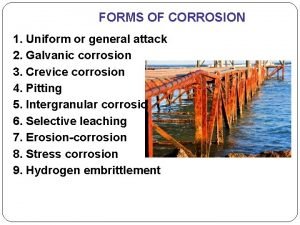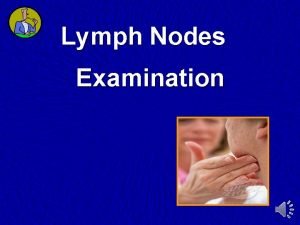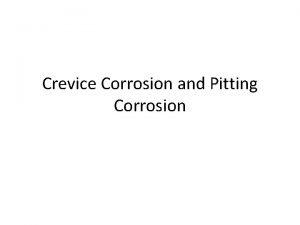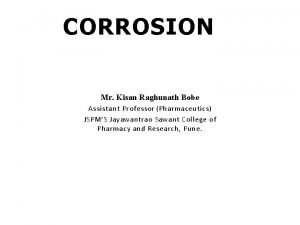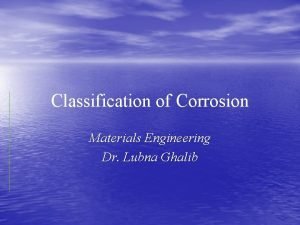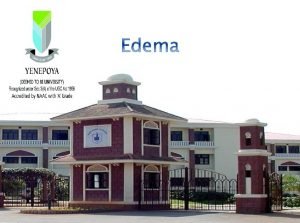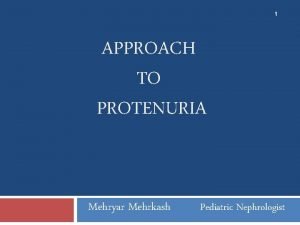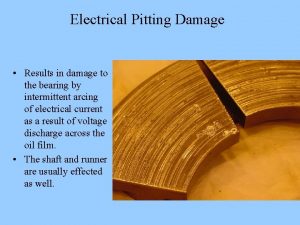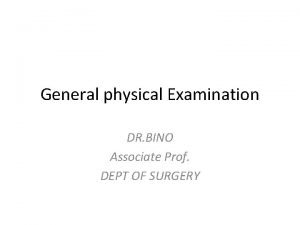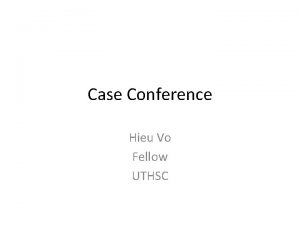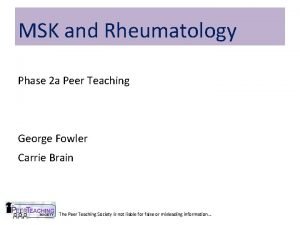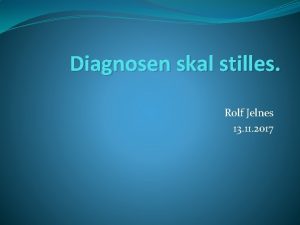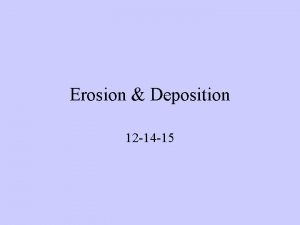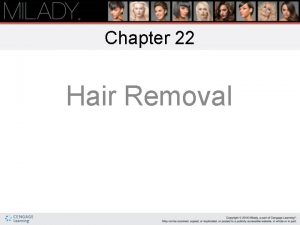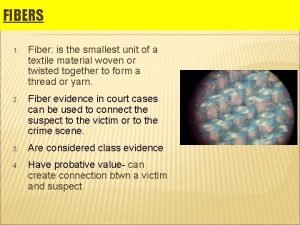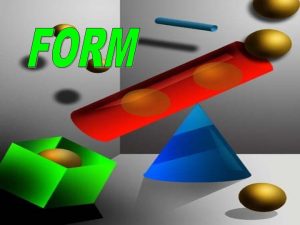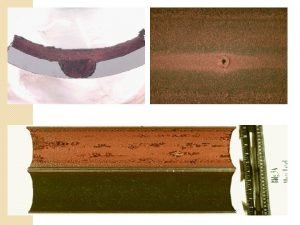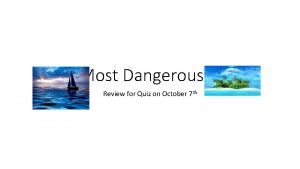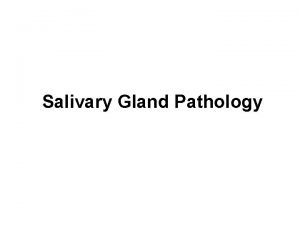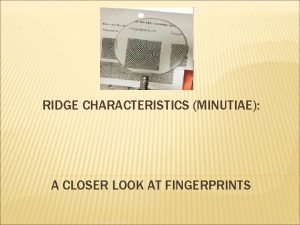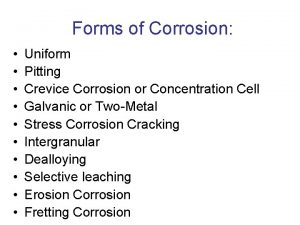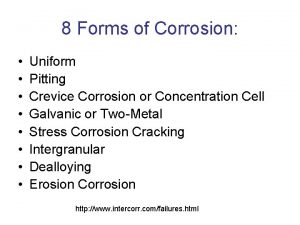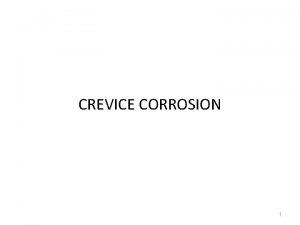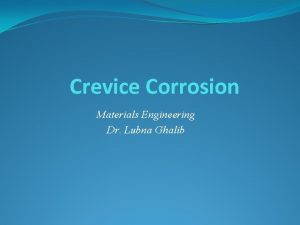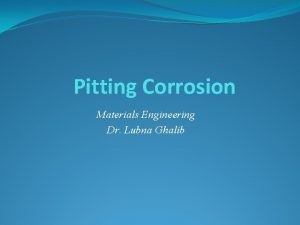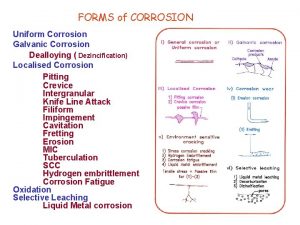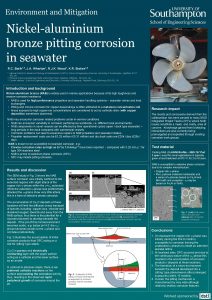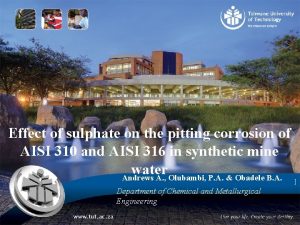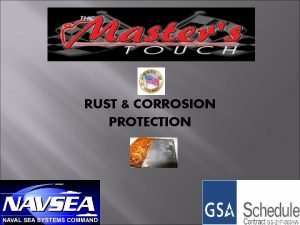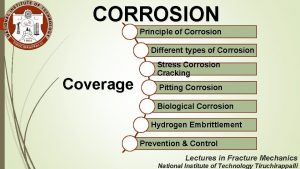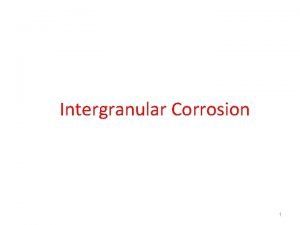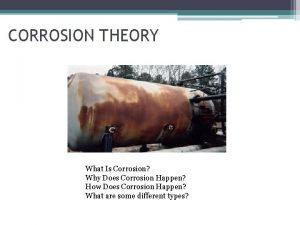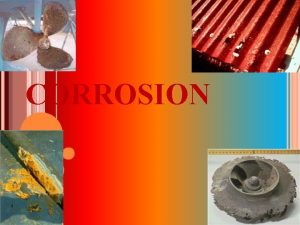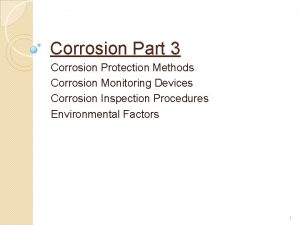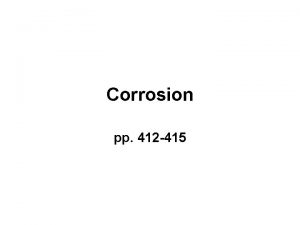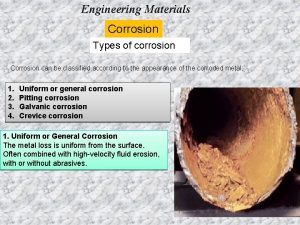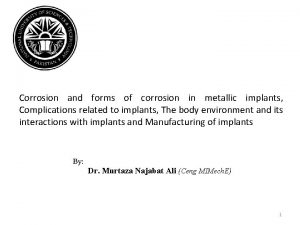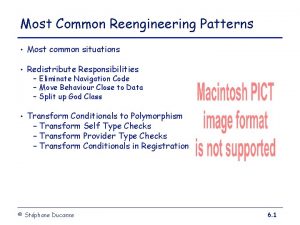Crevice Corrosion and Pitting Corrosion Most common forms











































- Slides: 43

Crevice Corrosion and Pitting Corrosion


Most common forms of localized corrosion are pitting – film breakdown often by halides and oxidizing solutions, crevice corrosion - within small gaps and openings and stress corrosion cracking


Crevice corrosion schematics


Electrode potential for crevice is more negative than the open face iron

0. 5 mm is the diffusion layer thickness for oxygen in water, smaller gaps mean oxygen transport is impeded Crevice heights

Evans diagram for the crevice corrosion of iron Crevice corrosion propagation by sustained different composition in crevice



Confined anodic reaction produces concentrated cations and cations, which then attract Cl- to maintain charge neutrality and make a very corrosive local environment


Area effects Area outside crevice drives/accelerates crevice corrosion How?

Distance from crevice

Design considerations to reduce crevice corrosion

• • Protecting against crevice corrosion Corrosion inhibitors chromates, dichromates, molybdates, phosphates, etc. Cathodic protection Design to eliminate crevices Select resistant materials

halides promote pitting and shift peak effect of changing anions in solution




Overwhelming the Cl with SO 42 - reduces its effect

Pit initiation




Actual measured values in a real pit




Increasing H+ and Cl- increases the corrosion current (conditions found in pits)

2) Dissolved Mo species makes molybdates which acts as a corrosion inhibitor 3) Mo species interact with cation vacancies to slow transport 4) Molydate species form a layer which inhibit transport of Cl- ions 5)Mo slows dissolution at pit base


Why? ? ?




Demonstration of Cl- increased in film when pitting occurs

Illustration showing similarities between pitting corrosion, crevice corrosion and stress corrosion cracking There is always a transport obstacle for the cathodic and anodic reactions.




 Uniform corrosion
Uniform corrosion Swollen clavicle lymph nodes pictures
Swollen clavicle lymph nodes pictures Pitting corrosion
Pitting corrosion Differentiate between dry corrosion and wet corrosion
Differentiate between dry corrosion and wet corrosion Difference between wet corrosion and dry corrosion
Difference between wet corrosion and dry corrosion Edema types
Edema types Buerger test
Buerger test 1+ pitting edema
1+ pitting edema Electrical pitting
Electrical pitting Pitting edma
Pitting edma Dr bino
Dr bino Pitting edema
Pitting edema Spondyloarthropathy
Spondyloarthropathy Rolf jelnes
Rolf jelnes Ateroomaplakki
Ateroomaplakki Affirmative contracted form
Affirmative contracted form Weak and strong forms
Weak and strong forms Types of elegy
Types of elegy Greatest common factor of 54 and 72
Greatest common factor of 54 and 72 Common anode and common cathode
Common anode and common cathode Lcm questions
Lcm questions Factors of 54
Factors of 54 Multiples of 18 and 24
Multiples of 18 and 24 Highest common factors and lowest common multiples
Highest common factors and lowest common multiples Most common affixes
Most common affixes หุบเขา
หุบเขา Chapter 22 milady review questions
Chapter 22 milady review questions What is the smallest unit of a textile material
What is the smallest unit of a textile material Piphat instrument
Piphat instrument Simplest and most common weave pattern
Simplest and most common weave pattern Why are related forms more agreeable than unrelated forms
Why are related forms more agreeable than unrelated forms Why are related forms more agreeable than unrelated forms
Why are related forms more agreeable than unrelated forms Why are related forms more agreeable than unrelated forms?
Why are related forms more agreeable than unrelated forms? Wet or electrochemical corrosion
Wet or electrochemical corrosion Most common pay periods
Most common pay periods Priapisml
Priapisml Gis data input
Gis data input Most dangerous game quiz
Most dangerous game quiz Routine request email example
Routine request email example The most common form of securing channels is through.
The most common form of securing channels is through. Warthin tumor
Warthin tumor Different ridge characteristics
Different ridge characteristics Most abundant element in earth crust
Most abundant element in earth crust Most common site of ureteric injury during hysterectomy
Most common site of ureteric injury during hysterectomy
